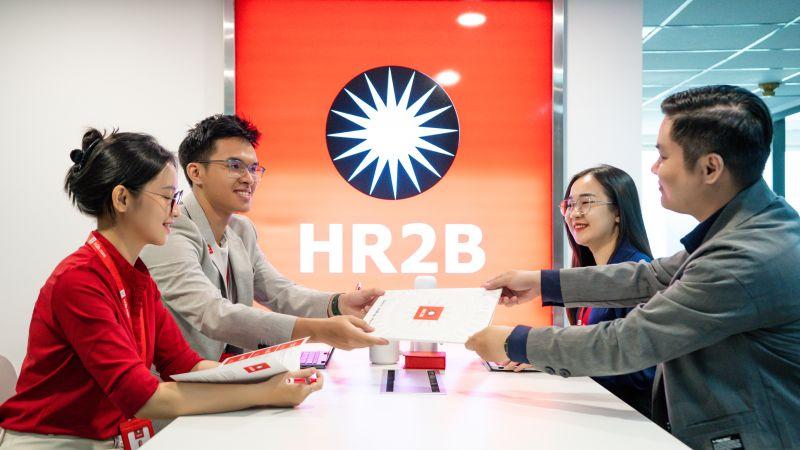In the context of globalization and increasingly fierce competition,multinational companies face constant pressure to expand rapidly, cut costs, andmaintain operational flexibility. Instead of increasing headcount—which oftencomes with many fixed barriers—staffing has become thepreferred strategy to meet the rapidly changing demands of the market.
1. What is Staffing? How Is It Different from Expanding Headcount?
To understand why staffing is becoming a growing trend, it's important todistinguish between staffing and traditional headcount. While both are relatedto human resources, their implementation and impact on the business arefundamentally different.
1.1 Staffing – A Flexible Workforce Solution
Staffing refers to the practice of outsourcing human resources throughspecialized service providers. Instead of recruiting, training, and managingemployees internally, businesses use available personnel from a third-partyvendor. This model allows companies to access high-quality talent quickly andeasily scale up or down without complex procedures.

Staffing offers far greater flexibility than traditional headcount.
1.2 Headcount – A Fixed Workforce Approach
Headcount involves companies directly hiring employees, signing employmentcontracts, and taking full responsibility for salaries, insurance, and benefits.While this method fosters long-term commitment and stability, it lacksflexibility, particularly when quick workforce adjustments are needed. Expandingheadcount often entails significant costs, complex management, and financialrisks.
1.3 Key Differences Between the Two Models
The table below highlights the fundamental differences between staffing andheadcount in terms of cost, flexibility, and application scope:
| Criteria | Staffing (Flexible) | Headcount (Fixed) |
| Type of Workforce | Outsourced personnel via a service provider | Directly hired and managed by the company |
| Flexibility | High – easily adjustable based on demand | Low – difficult to change workforce quickly |
| Cost | Optimized – pay by service or usage duration | High – includes salaries, insurance, benefits |
| Legal & Management | Provider holds primary responsibility | Company bears full legal and managerial burden |
| Best Use Cases | Short-term projects, rapid expansion, new market entry | Long-term roles, stability, core strategic roles |
2. Why Multinational Companies Prioritize Staffing
In a volatile global environment, multinational corporations need fast,cost-effective, and legally compliant workforce solutions. Staffing emerges asthe optimal choice due to its operational flexibility and risk mitigationcapabilities.
2.1 Cost Optimization and Reduced Financial Risk
With staffing, companies only pay for personnel when needed. Instead of bearingfixed costs for salaries, insurance, and benefits, businesses can allocatebudgets more effectively. This is crucial in uncertain economic climates andhelps mitigate financial losses.

Staffing enables multinationals to save costs and maintain operational agility.
2.2 Flexibility in Scaling Workforce to Market Needs
Scaling up or down based on projects is a frequent need for global businesses.Staffing allows for rapid workforce expansion during peak periods and quickdownsizing when markets slow—without disrupting the internal HR structure.
2.3 Legal Compliance Across Different Countries
Each country has its own labor laws and regulations, which can be complex forinternational companies. With staffing, service providers handle all complianceresponsibilities, allowing companies to focus on core operations without legalworries.
2.4 Fast Access to High-Quality Talent
Through staffing, companies can quickly onboard suitable talent without spendingmonths on recruitment processes. This is a competitive advantage, especially infast-paced industries such as tech, manufacturing, or multilingual customersupport.
3. Long-Term Benefits of Staffing for Enterprises
Staffing provides not only short-term cost advantages but also plays a strategicrole in enhancing efficiency and global competitiveness.
- Improves Global Operational Efficiency: Staffing reducesdirect HR management burdens, enabling HR teams to focus on strategicinitiatives rather than administrative tasks. This boosts productivity andstrengthens overall management effectiveness.
- Accelerates International Project Rollouts: Multinationalcompanies often run projects across multiple countries. Staffing allowsimmediate access to local talent, saving recruitment time and acceleratingproject timelines.
- Supports Market Entry Strategies: Instead of heavilyinvesting in headcount when entering a new market, staffing allows companies to"test the waters” at a lower cost. If the market shows potential, they canexpand; if not, withdrawal is much easier.

Staffing enables safe and efficient entry into new markets.
4. Challenges in Implementing Staffing
Despite its advantages, staffing also presents limitations and risks.Identifying these early on allows companies to build appropriate implementationstrategies.
- Complexity in Managing a Multinational Workforce: Whenoutsourced and in-house staff work together, differences in culture, processes,and expectations can create management difficulties. This requires properintegration policies and training.
- Risk of Overdependence on Service Providers: Relying tooheavily on a single provider can be risky, especially if service qualitydeclines or talent does not meet expectations. Companies should diversifyvendors and implement regular performance evaluations.
- High Demands for Data Security and Process Control:Staffing personnel may have access to sensitive company data. This calls forstrict data security protocols, particularly in sectors like finance,technology, and healthcare.

Staffing must be closely managed to mitigate potential risks.
5. Solutions to Help Businesses Optimize Staffing
To maximize the benefits of staffing, companies should implement a structuredplan that combines technology and trusted partners.
5.1 Choose Reputable Local Staffing Partners
A staffing partner knowledgeable in local labor laws and cultural practiceshelps businesses avoid legal issues and HR conflicts. Especially when enteringnew markets, a reliable partner can save significant time and recruitmentcosts—an essential factor for smooth and transparent operations.
5.2 Apply HR Tech to Manage a Flexible Workforce
In today’s digital age, leveraging HR technology is vital for effective staffingmanagement. Automation platforms can handle tasks such as time tracking,payroll, contract management, and benefits administration—minimizing errors andensuring transparency.
HR Tech also allows real-time performance monitoring and data-drivendecision-making.
5.3 Integrate Staffing with Long-Term HR Strategy
Staffing should not be viewed merely as a short-term fix for talent gaps. Itneeds to be integrated into the company’s overall HR strategy. When combinedwith a core internal team, staffing provides flexibility for immediate needswhile maintaining long-term capabilities.
This balanced approach helps companies build a stable, adaptable workforce readyto face market volatility.

Staffing performs best when aligned with long-term workforce planning.
6. HR2B’s Role in Supporting Multinational Staffing Needs
HR2B is one of Vietnam’s leading HR service providers,specializing in staffing and HR outsourcing for internationalcorporations. With over 20 years of experience, HR2B helps companies:
- Quickly access suitable talent in Vietnam
- Ensure compliance with local labor laws
- Optimize HR management costs
- Reduce workload for internal HR departments

HR2B is a trusted staffing partner for multinational companies.
In today’s unpredictable business environment, staffing is no longerjust a temporary solution, but a sustainable HRstrategy for multinational corporations. Businesses that effectivelycombine staffing with a permanent workforce gain a significant edge in globalexpansion, cost efficiency, and talent management.
 Uniting Talent
with
Opportunity
Uniting Talent
with
Opportunity




Top page